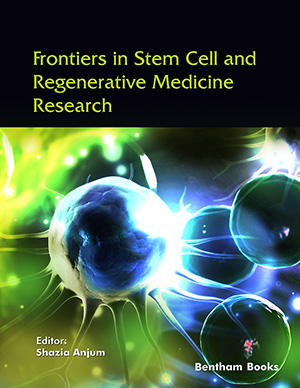
Abstract
Biliary atresia is a rare inflammatory sclerosing obstructive cholangiopathy that initiates in infancy as complete choledochal blockage and progresses to the involvement of intrahepatic biliary epithelium. Growing evidence shows that biliary atresia is not a single entity with a single etiology but a phenotype resulting from multifactorial events whose common path is obliterative cholangiopathy. The etiology of biliary atresia has been explained as resulting from genetic variants, toxins, viral infection, chronic inflammation or bile duct lesions mediated by autoimmunity, abnormalities in the development of the bile ducts, and defects in embryogenesis, abnormal fetal or prenatal circulation and susceptibility factors. It is increasingly evident that the genetic and epigenetic predisposition combined with the environmental factors to which the mother is exposed are potential triggers for biliary atresia. There is also an indication that a progressive thickening of the arterial middle layer occurs in this disease, suggestive of vascular remodeling and disappearance of the interlobular bile ducts. It is suggested that the hypoxia/ischemia process can affect portal structures in biliary atresia and is associated with both the extent of biliary proliferation and the thickening of the medial layer.
Keywords: Biliary atresia, hypoxia, ischemia, etiology, genetics, epigenetics, gut microbiota, immunity.
[http://dx.doi.org/10.1016/j.jaut.2016.06.005] [PMID: 27346637]
[http://dx.doi.org/10.1097/MPG.0000000000002555] [PMID: 31978011]
[http://dx.doi.org/10.1542/peds.2011-1869] [PMID: 22106076]
[http://dx.doi.org/10.1016/j.jpedsurg.2008.09.013] [PMID: 19361628]
[http://dx.doi.org/10.1007/BF01556048] [PMID: 741761]
[http://dx.doi.org/10.12688/f1000research.16732.1] [PMID: 30828434]
[http://dx.doi.org/10.1016/j.clinre.2015.11.010] [PMID: 26775892]
[http://dx.doi.org/10.1007/s00383-017-4172-6] [PMID: 29063959]
[http://dx.doi.org/10.1002/hep.24534] [PMID: 21748760]
[http://dx.doi.org/10.1016/j.yapd.2017.03.012] [PMID: 28688594]
[http://dx.doi.org/10.1016/j.jpedsurg.2015.10.058] [PMID: 26653951]
[http://dx.doi.org/10.1002/hep.29504] [PMID: 28865156]
[http://dx.doi.org/10.1016/j.jpedsurg.2004.12.002] [PMID: 15852270]
[http://dx.doi.org/10.1007/s00270-004-2636-2] [PMID: 15383852]
[http://dx.doi.org/10.1148/radiol.2443061051] [PMID: 17709832]
[http://dx.doi.org/10.1148/radiol.2452061093] [PMID: 17890351]
[http://dx.doi.org/10.1007/s00330-009-1681-2] [PMID: 20016905]
[http://dx.doi.org/10.1111/jgh.12151] [PMID: 23425046]
[http://dx.doi.org/10.14366/usg.14016] [PMID: 25036753]
[http://dx.doi.org/10.4103/0971-3026.155875] [PMID: 25969645]
[http://dx.doi.org/10.3390/jcm10235675] [PMID: 34884377]
[http://dx.doi.org/10.1111/j.1651-2227.1991.tb11808.x] [PMID: 1785291]
[http://dx.doi.org/10.1007/s00383-017-4161-9] [PMID: 28980017]
[http://dx.doi.org/10.1111/hepr.13060]
[http://dx.doi.org/10.1016/j.jpeds.2012.04.066] [PMID: 22683035]
[http://dx.doi.org/10.1177/000313481307900917] [PMID: 24069978]
[http://dx.doi.org/10.1111/jpc.13779] [PMID: 29105184]
[http://dx.doi.org/10.1053/jpsu.2002.34470] [PMID: 12149700]
[http://dx.doi.org/10.1007/s00383-006-1771-z] [PMID: 16947025]
[http://dx.doi.org/10.1053/jpsu.2001.25784] [PMID: 11479866]
[http://dx.doi.org/10.1016/S1015-9584(09)60306-7] [PMID: 14530107]
[http://dx.doi.org/10.1002/hep.24807] [PMID: 22105891]
[http://dx.doi.org/10.1097/INF.0000000000001889] [PMID: 29389827]
[http://dx.doi.org/10.1007/s13312-012-0092-7] [PMID: 22796690]
[http://dx.doi.org/10.3748/wjg.v24.i3.387] [PMID: 29391761]
[http://dx.doi.org/10.1177/0009922814548841] [PMID: 25187275]
[http://dx.doi.org/10.1016/j.jpedsurg.2015.03.001] [PMID: 25824438]
[http://dx.doi.org/10.1177/0009922811406264] [PMID: 22144720]
[http://dx.doi.org/10.1186/1750-1172-8-128] [PMID: 23987231]
[http://dx.doi.org/10.1002/hep.30515] [PMID: 30664273]
[http://dx.doi.org/10.1016/S0022-3476(74)80508-1] [PMID: 4472512]
[http://dx.doi.org/10.1002/hep.26512] [PMID: 23703680]
[http://dx.doi.org/10.1371/journal.pgen.1007532] [PMID: 30102696]
[http://dx.doi.org/10.1042/BSR20200068] [PMID: 32662506]
[http://dx.doi.org/10.1016/j.bbadis.2017.08.019] [PMID: 28844953]
[http://dx.doi.org/10.1097/PAI.0b013e3182028a8e] [PMID: 21285868]
[http://dx.doi.org/10.1002/jhbp.297] [PMID: 26510548]
[http://dx.doi.org/10.1038/pr.2013.177]
[http://dx.doi.org/10.3389/fphys.2020.00966]
[http://dx.doi.org/10.1016/j.jcmgh.2015.04.001] [PMID: 26090510]
[http://dx.doi.org/10.1038/nrgastro.2015.74] [PMID: 26008129]
[http://dx.doi.org/10.1002/bdr2.1340] [PMID: 29762915]
[http://dx.doi.org/10.1016/j.ebiom.2018.08.024] [PMID: 30236451]
[http://dx.doi.org/10.1007/s00534-013-0604-4] [PMID: 23567964]
[http://dx.doi.org/10.1016/j.devcel.2009.05.012] [PMID: 19619492]
[http://dx.doi.org/10.3748/wjg.v24.i29.3260] [PMID: 30090006]
[http://dx.doi.org/10.1007/s00383-018-4243-3] [PMID: 29508064]
[http://dx.doi.org/10.1371/journal.pone.0107977]
[http://dx.doi.org/10.1097/MPG.0000000000001375] [PMID: 27526058]
[http://dx.doi.org/10.1002/wsbm.1303] [PMID: 25963027]
[http://dx.doi.org/10.1016/j.jhep.2013.07.021] [PMID: 23872602]
[http://dx.doi.org/10.1371/journal.pone.0180896]
[http://dx.doi.org/10.1097/MPG.0000000000000875] [PMID: 26102172]
[http://dx.doi.org/10.1016/j.omtn.2018.10.006] [PMID: 30439647]
[http://dx.doi.org/10.1016/j.jpedsurg.2016.05.009] [PMID: 27373597]
[http://dx.doi.org/10.1053/j.gastro.2013.01.022] [PMID: 23336978]
[http://dx.doi.org/10.1111/ahg.12199] [PMID: 28657145]
[PMID: 26131092]
[http://dx.doi.org/10.1016/j.cyto.2016.03.003] [PMID: 27003131]
[http://dx.doi.org/10.1159/000371694] [PMID: 26045276]
[http://dx.doi.org/10.1371/journal.pone.0138381] [PMID: 26379158]
[http://dx.doi.org/10.1002/jcla.22342] [PMID: 29251369]
[http://dx.doi.org/10.1016/j.gene.2017.07.027] [PMID: 28710035]
[http://dx.doi.org/10.1097/MPG.0b013e318264e648] [PMID: 22732895]
[http://dx.doi.org/10.1053/j.gastro.2019.06.017] [PMID: 31228442]
[http://dx.doi.org/10.1186/s13104-019-4227-y] [PMID: 30925941]
[http://dx.doi.org/10.1186/s11658-018-0134-9] [PMID: 30906331]
[http://dx.doi.org/10.1007/s10620-016-4411-z] [PMID: 28083843]
[http://dx.doi.org/10.1097/MPG.0b013e318244148b] [PMID: 22167021]
[http://dx.doi.org/10.1186/1752-0509-7-104] [PMID: 24138927]
[http://dx.doi.org/10.1097/MPG.0000000000001194] [PMID: 26960174]
[http://dx.doi.org/10.1016/j.cellsig.2014.01.003] [PMID: 24412919]
[http://dx.doi.org/10.1016/j.bbrc.2014.02.065] [PMID: 24569080]
[http://dx.doi.org/10.1097/MPG.0000000000000573] [PMID: 25238119]
[http://dx.doi.org/10.1186/s12920-017-0259-0] [PMID: 28416017]
[http://dx.doi.org/10.1038/pr.2017.87] [PMID: 28355202]
[http://dx.doi.org/10.1371/journal.pone.0169306]
[http://dx.doi.org/10.1152/ajpgi.00032.2016] [PMID: 27659419]
[http://dx.doi.org/10.1016/j.bbrc.2011.12.054] [PMID: 22206678]
[http://dx.doi.org/10.1038/srep26969] [PMID: 27243754]
[http://dx.doi.org/10.1002/hep.24106] [PMID: 21319190]
[http://dx.doi.org/10.1186/s12916-020-01667-x]
[http://dx.doi.org/10.1093/hmg/ddaa218] [PMID: 33001180]
[http://dx.doi.org/10.1172/jci.insight.120687] [PMID: 29925683]
[http://dx.doi.org/10.3389/fgene.2020.00811] [PMID: 32849810]
[http://dx.doi.org/10.1055/s-0032-1329899] [PMID: 23397531]
[http://dx.doi.org/10.1016/j.gene.2018.07.071] [PMID: 30059753]
[http://dx.doi.org/10.1016/j.jped.2016.11.009] [PMID: 28325677]
[http://dx.doi.org/10.1016/j.cyto.2015.12.023] [PMID: 26765485]
[http://dx.doi.org/10.1111/jgh.12900] [PMID: 25611432]
[http://dx.doi.org/10.1053/j.gastro.2015.09.008] [PMID: 26404950]
[http://dx.doi.org/10.1016/j.jpedsurg.2015.02.005] [PMID: 25783388]
[http://dx.doi.org/10.1371/journal.pone.0136214]
[http://dx.doi.org/10.1002/hep.28851] [PMID: 27641439]
[http://dx.doi.org/10.2220/biomedres.38.269]
[http://dx.doi.org/10.1007/s00383-017-4154-8] [PMID: 29039048]
[http://dx.doi.org/10.1002/hep.30051] [PMID: 29679373]
[http://dx.doi.org/10.1172/JCI57728] [PMID: 22005305]
[http://dx.doi.org/10.1016/j.prp.2014.12.003] [PMID: 25624184]
[http://dx.doi.org/10.1007/s00595-017-1502-1] [PMID: 28293742]
[http://dx.doi.org/10.1177/1093526617707851] [PMID: 28474973]
[http://dx.doi.org/10.1371/journal.pone.0127191]
[http://dx.doi.org/10.4103/jiaps.JIAPS_132_18] [PMID: 31571764]
[http://dx.doi.org/10.1007/s00383-019-04459-4] [PMID: 30762106]
[http://dx.doi.org/10.1016/j.jpedsurg.2018.04.029] [PMID: 29861326]
[http://dx.doi.org/10.3748/wjg.v23.i39.7119] [PMID: 29093620]
[http://dx.doi.org/10.1007/s00431-012-1820-7] [PMID: 22983023]
[http://dx.doi.org/10.1016/S0025-6196(11)63624-0] [PMID: 9443684]
[http://dx.doi.org/10.5114/ceh.2019.89476] [PMID: 31893243]
[http://dx.doi.org/10.1016/j.humpath.2007.05.021] [PMID: 17900655]
[http://dx.doi.org/10.1074/jbc.M700194200] [PMID: 17562716]
[http://dx.doi.org/10.1007/s10620-010-1347-6] [PMID: 20725787]
[http://dx.doi.org/10.1155/2016/2953727] [PMID: 26880950]
[http://dx.doi.org/10.1515/iss-2018-0009] [PMID: 31579773]
[http://dx.doi.org/10.1016/j.jpedsurg.2015.04.006] [PMID: 25979202]
[http://dx.doi.org/10.1016/j.jss.2012.05.082] [PMID: 22785360]
[http://dx.doi.org/10.1038/nrgastro.2015.91] [PMID: 26008130]
[http://dx.doi.org/10.1021/acs.chemrestox.5b00227] [PMID: 26175131]
[http://dx.doi.org/10.1126/scitranslmed.aaa1652] [PMID: 25947162]
[http://dx.doi.org/10.1002/hep.28603] [PMID: 27102575]
[http://dx.doi.org/10.21037/dmr-20-97] [PMID: 33615212]
[http://dx.doi.org/10.1136/gutjnl-2013-306541] [PMID: 25021423]
[http://dx.doi.org/10.3389/fimmu.2014.00427] [PMID: 25250028]
[http://dx.doi.org/10.1111/jgh.14777]
[http://dx.doi.org/10.1097/MPG.0000000000002686] [PMID: 32443032]
[http://dx.doi.org/10.1006/jsre.2001.6234] [PMID: 11676556]
[http://dx.doi.org/10.1016/j.gastro.2005.05.052] [PMID: 16083724]
[http://dx.doi.org/10.1016/j.clim.2005.01.012] [PMID: 15885644]
[http://dx.doi.org/10.1002/hep.21366] [PMID: 17058262]
[http://dx.doi.org/10.1007/s00383-005-1589-0] [PMID: 16328331]
[http://dx.doi.org/10.1111/j.1478-3231.2008.01921.x] [PMID: 19040538]
[http://dx.doi.org/10.1152/ajpgi.00442.2007] [PMID: 18436621]
[http://dx.doi.org/10.1016/j.jhep.2009.12.027] [PMID: 20347178]
[http://dx.doi.org/10.1053/j.gastro.2010.07.042] [PMID: 20659472]
[http://dx.doi.org/10.1126/scitranslmed.3002069] [PMID: 21957172]
[http://dx.doi.org/10.1242/dev.086702] [PMID: 23293295]
[http://dx.doi.org/10.1002/hep.28599] [PMID: 27081925]
[http://dx.doi.org/10.1016/j.ajpath.2018.07.024] [PMID: 30201498]
[http://dx.doi.org/10.1128/JVI.00510-17] [PMID: 28515290]
[http://dx.doi.org/10.1002/hep.28947] [PMID: 27859498]
[http://dx.doi.org/10.1016/j.jpedsurg.2014.12.027] [PMID: 25783404]
[http://dx.doi.org/10.1111/apa.14830]
[http://dx.doi.org/10.1097/MCG.0000000000001121] [PMID: 30222646]
[http://dx.doi.org/10.1155/2015/832943] [PMID: 26101777]
[http://dx.doi.org/10.1002/hep.32107]
 59
59 2
2




























